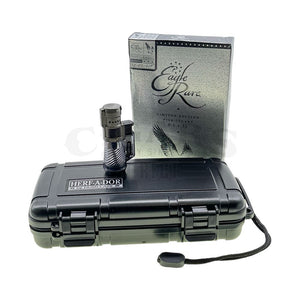Time for a little spring Humidor cleaning?
Share
Temperatures are rising, flowers and trees are budding out…spring is definitely in the air. The change of season does something to people—maybe it’s the sap rising—that typically results in dusting off cobwebs and airing things out. Yup, it’s spring cleaning time.
If it’s been some time since you’ve seen the bottom of your humidor if you’ve just been tossing in cigars and checking the humidity since who knows when it’s probably a candidate for some spring cleaning. If it’s turned into a repository of cellophane wrappers and cigar bands that you were meaning to get around to doing something with someday, and maybe some bits and pieces of cigar wrappers that got dinged up somehow, it’s definitely time for a cleanout.
Start by removing the cigars and put them where they won’t get hurt—you probably won’t need to do anything more than find them a safe place to rest for a few minutes, but if you think they’ll be out of the humidor for longer than this, stick them in some zip lock bags. Then get rid of whatever’s left.
It’s a good idea to re-season the wood inside of your humidor every once in a while; spring cleaning is a great time to do this. You’ll need a clean sponge (don’t substitute paper towels or anything else made of fibers; the grain of the wood will snag and tear at them and the inside of your humidor will look something like a mohair sweater instead) and a bottle of distilled water.
There are two basic ways to apply the water to the wood. The first is to pour some water directly into humidor, enough to cover the bottom. Let it sit for a bit, long enough for the wood to start soaking it up, and then dip your sponge in and move the water around to every interior surface—the walls, the top, the trays—anything that’s made from Spanish cedar. After you’re done, tip out any extra water and up-end your humidor so it can drip dry.
The other approach is to wet the sponge and wipe down all the surfaces. This is the way to go if you’re worried about applying too much water, but it can be a little putsy as you have to keep wetting the sponge as you wipe—even the wood in a properly humidified humidor can be pretty thirsty! As with the first approach, tip your humidor on its side with the lid open when you’re done so it can dry out some; 30 minutes to an hour should be enough time. If there are removable trays, take them out and let them dry separately.
This next step might seem like overkill but it really isn’t. Once the wood is dry to the touch, go over it again with a damp sponge. When you’re done, leave the humidor open until the wood is dry to the touch.
At this point your humidor is re-primed and ready to go. Make sure your humidification device is, too. If it’s not, or you’re not sure it is, check here (clickable link) for advice on how to make it so.














